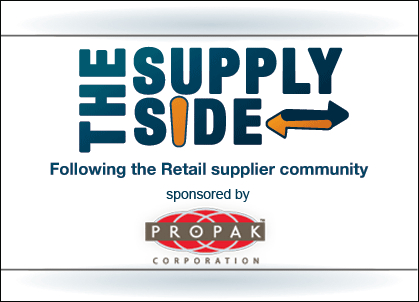The Supply Side: Snyder’s-Lance latest to push direct-to-consumer
by January 6, 2016 12:34 pm 384 views

Editor’s note: The Supply Side section of Talk Business & Politics focuses on the companies, organizations, issues and individuals engaged in providing products and services to retailers. The Supply Side is managed by The City Wire and sponsored by Propak Logistics.
–––––––––––––––
The lines between supplier and retailer continue to be blurred as more companies find new opportunities to sell their products direct to consumers. Snyder’s-Lance launched an online store, dubbed Snack Shack to deliver customer orders directly, bypassing retailers.
The snack maker said it created the online store to help customers without access to their favorite brands because of geography. Customers may order brands and snacks direct from the manufacturer. There is a $25 minimum purchase amount for the orders to be shipped, the company noted on its website.
Snyder’s-Lance joins the ranks of other major product suppliers such as Proctor & Gamble who have been selling direct to consumers online from its P&G Shop portal for the past few years. P&G also took aim in 2014 at Dollar Shave Club and began offering a subscription-based purchasing plan for its Gillette razors.
Likewise last year, cereal king Kellogg’s attempted to come out from under declining market share among its brands like Frosted Flakes and Frosted Mini Wheats whose sales fell 4.5% and 5%, respectively in 2014. In 2015 Kellogg’s launched its own online store which includes everything from branded items to retail gift card and donations made to charities and schools.
The company said it has become more focused on connecting with families in a direct manner through loyalty rewards program and coupon offers on its wide variety of products. That said, the product supplier still spends upward of $1 billion annually on brand advertising.
INEVITABLE TRANSITION
Supply chain expert Jim Tompkins warned consumer product companies back in 2012 that they should be selling direct to consumers, in addition to their traditional retail channels. Tompkins is the CEO of Tompkins International who has previously spoken at the University of Arkansas Supply Chain Conference.

Tompkins said it is becoming more difficult to distinguish some manufacturers from retailers in some instances given that retailers are ramping private label offerings and product suppliers are now selling direct to consumers via online stores.
“Consider a major CPG (consumer packaged goods) company in the bicycle industry as a classic example of a manufacturer using multiple channels to merchandise and sell their products to biking enthusiasts. They sell through retail stores, online through their own website, and through Amazon to reach the maximum number of consumers. Is this bicycle company a supplier or retailer?,” Tompkins said.
He said all companies have become consumer focused, a shift that first began in the past decade and the inevitable transition has escalated since 2012, especially with the rise of Amazon. Over the next five years Tompkins predicts “consumers will continue to take control of satisfying their own product needs, CPG companies and retailers are pushed to take control of their supply chains in order to fulfill the needs of their target customers.”
Tompkins said retailers and CPG companies will continue to transform their supply chains to best deliver their business strategies to the marketplace, but it won’t be easy because supply chains are transitioning from a push system into one where customers are in control and pull product through supply chains.
UPSIDES OF DIRECT-TO-CONSUMER
Carol Spieckerman, CEO of Spieckerman Retail, has said there are several dynamics converging that make it attractive for brand marketers to dial up their direct-to-consumer outreach.
“Although many retailers have played a great game of catch-up in the digital space, brand marketers can’t afford to cede all of their content marketing and consumer outreach to retailers. Retailers may still own the shelf but the dizzying number of digital outlets available to brand marketers is quite another proposition,” Spieckerman told Talk Business & Politics.
Other experts said that while CPG’s are growing their direct sales, they still represent a between 11% to 17% of overall sales. In other words, retailers are still needed to push the majority of sales they get annually.
Spieckerman said the opportunity for CPGs to forge direct relationships with consumers and collect valuable data on their habits is too compelling to pass up. She said retailers have become more tolerant of suppliers’ direct-to-consumer efforts because it amps up brand equity and increases brand awareness which also benefits retailers.
More than half of manufacturers who report selling directly to consumers on their own e-commerce sites report it has had a positive effect on relationships with other sales channels, according to a study completed by Forrester Research last year. Only 9% reported a negative effect while 36% reported the effect was neutral.
More than 75% of companies that have implemented direct-to-consumer e-commerce channels reported in the Forrester study that their programs have either met or exceeded revenue targets.
